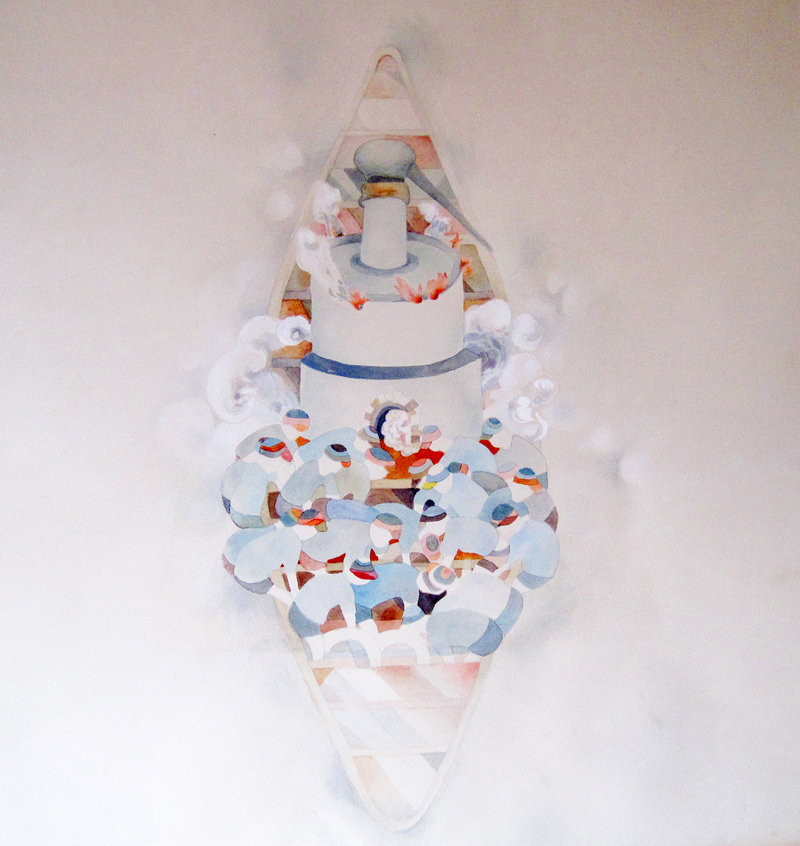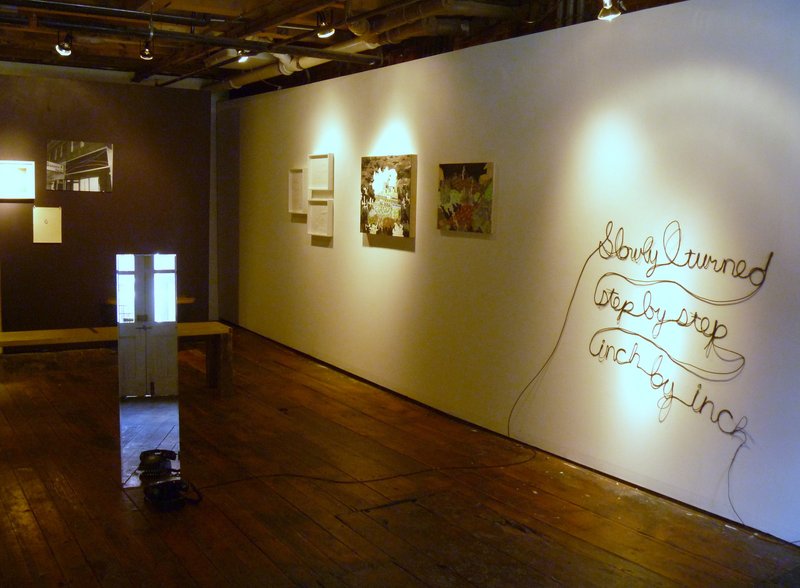The exhibition “6/6/6” is a concept show in which six artists from six cities connected with each other through social networking media. Each artist selected another artist from a different city and so, through chain-letter logic, the direction was expansively unpredictable.
Some concept shows are born of great ideas but die from the lack of good art. This is not the case here — while “6/6/6” is somewhat disjointed, the art is solid (maybe in part because each had to secure a local venue for the exhibition, and so they had their own reputations on the line).
Together, they make an interesting cross-section of about half of the most important contemporary art cities in the country: San Francisco, Chicago, Santa Fe, Detroit, Philadelphia and Portland.
By definition, artists are innovators, so it’s not surprising artists were among the first to grasp the possibilities of social media such as Facebook and MySpace.
If you aren’t part of the digitally inculcated, you might not yet be able to imagine the extent and radical cultural effects of the new media — which can already be seen in the music industry (and Middle East revolutions).
While the exciting idea behind “6/6/6” is social networking, that idea — unfortunately — is largely left behind when it comes to the art itself. The only work that clearly brings the conceptual armature to bear is the installation at Portland’s Gallery 37-A by local artist Jeff Badger.
Badger’s installation piece features an old rotary phone on the floor in front of a mirror (tilted a la in a shoe store). The phone line travels from the phone onto a wall, where the cable is stapled into place, spelling out the words, “Slowly I turned / step by step / inch by inch” in looping cursive script. Hilariously, the old black phone is rather fiercely fit with real sharks’ teeth that are only really visible in the mirror.
The old phone reminds us of changes in communications technology, while the teeth remind us of the vicious “telephone effect” and its inherent one-person-tells-another structure. The writing speaks of communications and linear progress while slyly hinting at the transformative processes of the installation piece itself (and the act of installing it). That the line simply pops into a hole in the brick wall is a sweet bit of punctuation respecting the gallery’s role in presenting the work.
Badger’s piece stays clear of any heavy or over-determined messaging. It’s subtle and entertaining installation art made with very simple means. It’s smart but also humble and fun — a combination which, unfortunately, is rare for installations.
Santa Fe artist Joanne Lefrak’s three shadowboxes (scratched Plexiglas over white paper, in which the shadows are much more visible than the scratched surface) also traffic, though obliquely, in metaphors relevant to the exhibition’s driving concepts. While the technological and communications issues are important, less obvious are the degrees of “remove” tied to the chain-letter logic and a complex relationship to history — since it appears no less as something forgotten or lost than as knowable fact.
Two of Lefrak’s images revisit passed-over industrial sites, while the other is based on a photo of a children’s jungle gym semi-melted by the atomic bomb dropped on Hiroshima. The artist’s ghostly technique struck me as terrifyingly apt for the subject since it brought a flood of memories of images, such as people’s outlines burned onto buildings by the nuclear weapon.
In terms of artistic accomplishment, I particularly like Dan Schank’s elegantly cool collaged paintings, but my highest praise goes to Kathy Liesen’s “Boat #1.” Her stylized watercolors are mellow, elegant and beautifully finished. Her understated sense of color and value in these two images has such a light touch that she is even able to add “drawing” to her works by impressing the paper.
Liesen’s vertical boat images in particular have a beautiful sense of narrative and aesthetic flow. Like her other work, “Boat #1” has a soft, quiet and even rounded feel, but the image’s 20 or so figures are in a bit of a flurry before the boat’s wedding cake-shaped still/boiler as cottony waves assault the back of the vessel.
I also enjoyed Amanda Curreri’s “Desire Drawings,” which range from a dollar bill tacked to the wall to a large photograph on canvas of a page of a notebook with a single line on it. Although I was perplexed by them at first, it was well worth the time I spent to understand her sweet-little-nothings take on romance. If a crush and a date could be packed into a suite of drawings, Curreri has done it.
“6/6/6” is a bit frustrating because it is so disjointed, but the idea of the show is fun, and it’s interesting to see the artists as representatives (albeit self-elected) of their respective towns. It also fits Gallery 37-A’s intellectual project, and makes the small gallery seem unexpectedly expansive. It’s well worth a visit.
Freelance writer Daniel Kany is an art historian who lives in Cumberland. He can be contacted at:
dankany@gmail.com
Send questions/comments to the editors.




Success. Please wait for the page to reload. If the page does not reload within 5 seconds, please refresh the page.
Enter your email and password to access comments.
Hi, to comment on stories you must . This profile is in addition to your subscription and website login.
Already have a commenting profile? .
Invalid username/password.
Please check your email to confirm and complete your registration.
Only subscribers are eligible to post comments. Please subscribe or login first for digital access. Here’s why.
Use the form below to reset your password. When you've submitted your account email, we will send an email with a reset code.